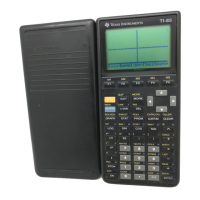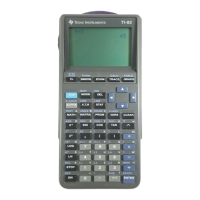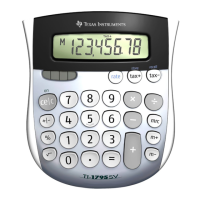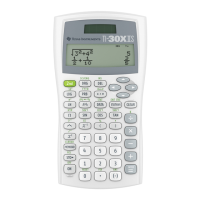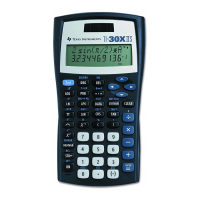476 Graphs & Geometry
Creating a time plot or web plot sequence
You can use the Sequence graphing mode to plot a time plot or web plot
from the entry line.
• A Time plot plots n on the horizontal axis against the value of the
sequence at each term, u1(n), on the vertical axis. A time plot is useful
for identifying patterns in sequence values.
• A Web plot plots the sequence value for a preceding index, such as
u1(n-1), on the horizontal axis against the value of the sequence for
the current index, such as u1(n), on the vertical axis. A web plot is
useful for analyzing the long-term behavior of a recursive sequence
(as with a convergence or oscillation).
1. Specify the parameters required for the type of sequence plot you
want:
–The u1(n)= expression field is where you enter or edit the
sequence. Type the expression that defines the sequence. The
term index, n is a series of consecutive integers that starts with
zero or any positive integer. The sequence name can include
letters, numbers, and parentheses in the formats: u1, u1(n), u1(),
myseq, myseq(n), or myseq(). (If you type the sequence name in
the format u1() or myseq(), the application automatically adds
the n.)
– The expression you type for a sequence can reference a variable
assigned to work with a slider.
–The Initial Terms parameter is the first term to evaluate for a
recursive sequence. If the sequence expression references more
than one prior term, such as u1(n-1) and u1(n-2), then you must
type additional initial terms. Separate multiple terms with
commas.
–The nStep range is the minimum index, maximum index, and the
increment used for graphing.
For example, in the u1(n) field, type the expression 2*u1(n-1) + 1. No
initial term or step range entry is required in this case.
2. After entering the parameters, press
· to graph the sequence
specified.

